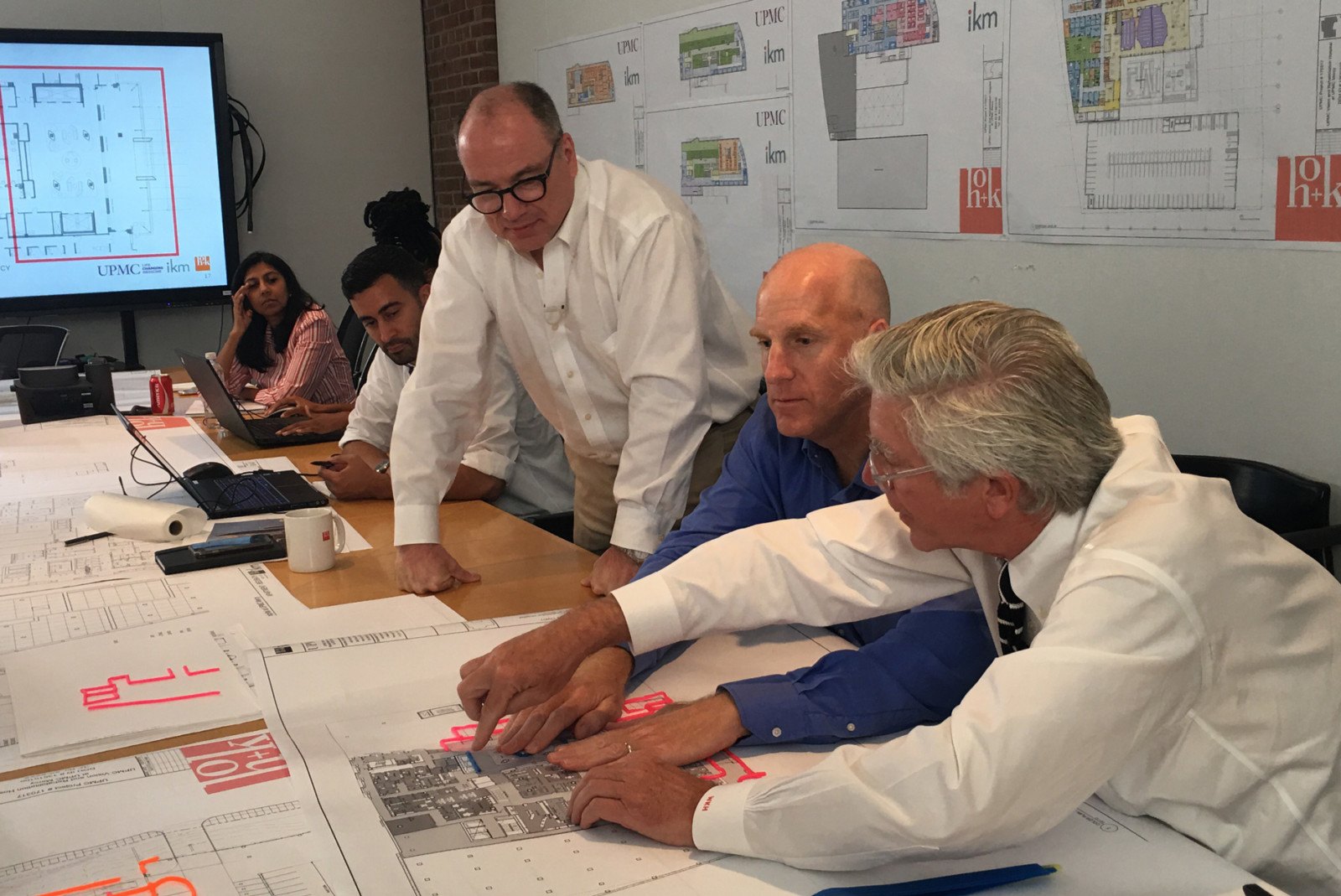Chris Downey, AIA, who since losing his sight in 2008 has worked with HOK on projects for the Duke Eye Center and UPMC’s Vision and Rehab Institute, uses his new perspective to bring a different kind of architectural vision.
Last summer HOK’s Washington, D.C., office was thrilled to host a CBS News film crew for a UPMC team meeting with Downey. The segment aired on last night’s episode of “60 Minutes,” and can be viewed along with a transcript here.
Here’s an excerpt from the segment:
Downey lost his sight after an operation to remove a benign tumor in his brain. “Lots of people, friends that were architects … would say ‘Oh, it’s the worst thing imaginable, to be an architect and to lose your sight,’ but I quickly came to realize that the creative process is an intellectual process,” said Downey. “I just needed new tools.”
He found a printer that can emboss architectural drawings so that he can “read” them through touch, the architectural equivalent of Braille. And he came up with a way to “draw” his own ideas onto the plans using malleable wax sticks. The San Francisco Lighthouse for the Blind and Visually Impaired, an organization that teaches the blind skills to help navigate life, helped Downey learn to get around on his own. He started relying more on his hearing and the sense of feel from the tip of his cane. That opened a new avenue, he said. “I was fascinated walking through buildings that I knew [when I was] sighted, but I was experiencing them in a different way,” he told Stahl. “I was hearing the architecture, I was feeling the space.”
As his luck would have it, after losing his job in the recession nine months after losing his sight, he discovered a firm that was designing a facility for veterans with sight loss. They were intrigued to meet a blind architect. “It took my disability and turned it upside down,” said Downey. He now had an expertise “that virtually nobody else had to offer.”
That job led to others, including work on an eye center at Duke University Hospital, a project for Microsoft and making a massive San Francisco commuter terminal accessible to the visually impaired. His pioneering designs include grooves to guide people along the platform and changes in floor texture to indicate when to turn to find the escalator. At the San Francisco Lighthouse, he came up with the idea to put an internal staircase connecting the building’s three floors. The sighted can see it; the blind can hear the sounds of activities on the other floors.
Downey has been a consultant to HOK for Duke University Hospital’s Eye Center and the University of Pittsburgh Medical Center (UPMC) Vision and Rehabilitation Institute. Scheduled to open in 2021, the 410,000-sq.-ft. UPMC building will provide nine stories of clinical and research space, and Downey’s expertise has been vital to designing the space to best support the blind and visually impaired. Enriching environments will help patients navigate the building, with lighting related to contrast and brightness, materials and textures that aid people with canes and sound techniques employed as wayfinding tools.
More:
